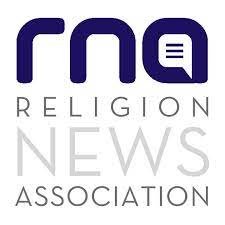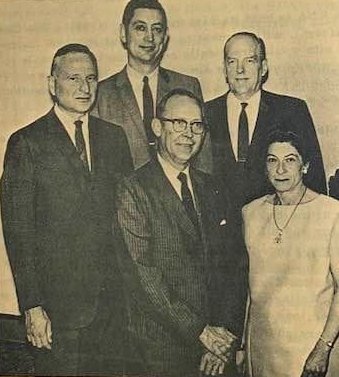RNA History
Long before many other associations for beat reporters existed, religion reporters at U.S. daily newspapers sought support and encouragement in covering a challenging beat.
Although only a dozen religion reporters gathered to found the Religion Newswriters Association in 1949, RNA now enjoys record member growth, expanded contests and new ventures.
In the early 1950s, RNA's founders "all were aware of a new attitude in their city rooms and across the country toward religion," according to a 1974 history to RNA written by retired Chicago Tribune reporter and former RNA President Richard Philbrick.
The RNA was dedicated, even from the start to "raising the standards of religion newswriting in the secular world of newspapers, magazines, wire services, and news agencies."
Reports at the time touted the religion beat as "the fastest growing news field" of that era.
Both the Associated Press and United Press created a religion beat position within their vast wire service operations. At the same time, increasingly media-savvy religious groups recognized the value of public relations specialists and several journalism programs across the country created programs in "religious journalism."
But just as is the case today, not all editors in the 1950s recognized the growing need for religion reporting or believed it required a high degree of skill and extensive knowledge.
At some publications, clergy who advertised were promised editorial space or commissioned to write articles about denominational events.
Some editors demanded religion reporters belong to an organized faith to cover the beat.
And typically editors rarely interpreted "religion" to extend beyond the nation's dominant faiths of Christianity and Judaism. Reflecting social attitudes of the time, some papers even segregated the "Church Notices" for Black churches from all other religion notices.
To help fight these and other concerns about the beat members chose founding member Frank Stewart as RNA's first president. Stewart was widely respected for his religion reporting at the now-defunct Cleveland Press, where he was named religion editor in 1938 after just serving as a sports and state editor.
As membership grew RNA members decided in 1951 to create a newsletter, which Stewart edited. A year later, the group officially approved a constitution and bylaws. The bylaws banned public relations people as members of RNA unless they were correspondents or stringers for the secular media.
Throughout the 1950s, publications were sending religion reporters to national events and in the process, those following the beat began to develop professional and personal alliances, helping to build RNA membership to 88 by 1957.
The momentum for religion reporting was still evident at RNA's tenth annual meeting. Held in Washington, D.C., it included an academic report about religion editors at daily newspapers. The report said the religion editor's post was steadily gaining importance and prestige, with 50 experienced journalists occupying the position.
This same year RNA authorized Richard Wager, of the Cleveland Plain Dealer, to campaign against the use of the title "church editor." Editor and Publisher's annual yearbook used the term but changed the notation to "religion editor" after RNA's campaign.
Questions about who was eligible to join RNA had persisted. In 1959, RNA reaffirmed the ban on public relations officials. In addition, the group, still named the Religious Newswriters Association, agreed to exclude occasional contributors and essayists on the topic of religion.
RNA meetings of the 1960s increasingly stressed ethics. Discussions included the issue of objectivity and covering religious groups to which a reporter belonged. Accepting awards from non-newspaper organizations and accepting travel money for covering missions also were debated.
One leader in these ethical queries was Harold Schachern of the Detroit News, who was RNA president from 1964 to 1966.
Among his efforts, Schachern pushed to have the National Conference of Catholic Bishops meetings opened to the press. At the time, reporters received NCCB handouts and newspaper editors expected reporters to create the pretense that information was passed onto newspaper readers from first-hand observation. Thus, reporters had little chance to confirm the accuracy of what they wrote.
Schachern died in 1969, three years before the bishops finally opened their annual November meeting to reporters. But Schachern's campaign was credited with affecting coverage of the Second Vatican Council, although those gatherings still included much secrecy.
A debate that had existed almost since RNA's founding was settled at its 1971 meeting when the Religious Newswriters Association became the Religion Newswriters Association.
Also, during the 1970s, RNA officers increased the practice of speaking out on behalf of religion writers, especially when problems developed in press rooms regarding access to information and key leaders.
In the late 1970s and early 1980s, interest in religion reporting was spurred in part by the role of the Christian Right in political campaigns. The Rockefeller Institute held a forum that resulted in a 1983 treatise about the beat that featured several leading RNAers.
Throughout the 1980s, there was a debate about allowing members of the broadcast media to join RNA, which was approved at the end of the decade.
As the 1990s began, RNA officers could be found touting the beat at continuing education seminars and meetings of professional groups such as the Society of Professional Journalists and the Poynter Institute.
With membership in the mid-1990s at about 200, with another 100 associate members, the day-to-day business of keeping information current, publishing a bimonthly newsletter, coordinating a contest and responding to other inquiries was becoming a burden to the all-volunteer, professional board that had coordinated all RNA business since its founding.
Thus, at the 1995 RNA annual gathering, members approved hiring a part-time executive director to help administer the contest, edit the newsletter and respond to membership inquiries.
In 2016, RNA officially changed its name from Religion Newswriters Association to Religion News Association.
From “RNA: Nearly Five Decades of Following Faith’s Footsteps” by Debra L. Mason

